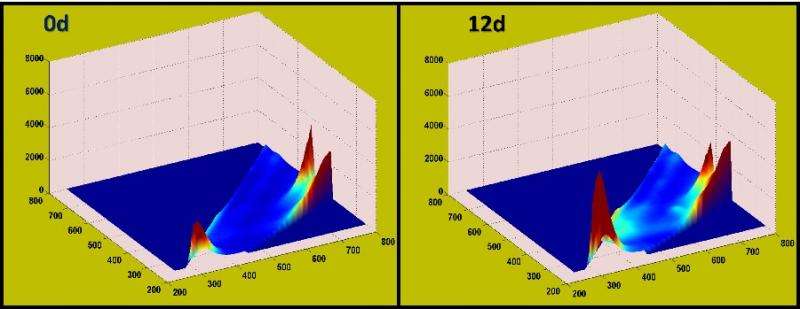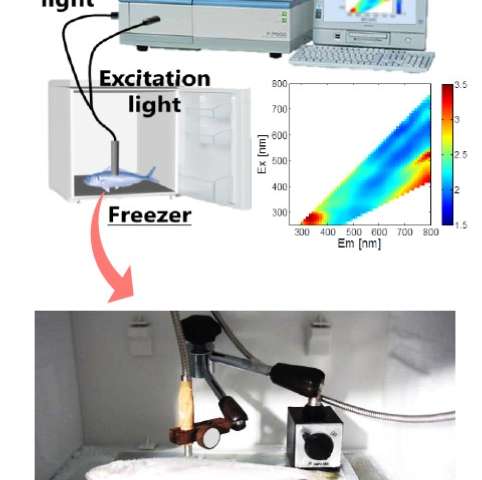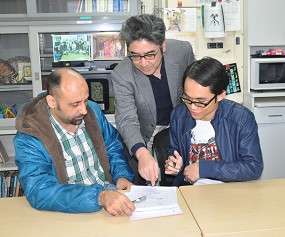Non-destructive sensing of fish freshness

In Japan, freshness expression is the fundamental and crucial determinant of acceptability and pricing on the market because the valuable and prime fresh fish product is typically suitable to be eaten raw such as 'Sashimi' and 'Sushi'. On the other hand, estimating freshness status of frozen seafood products is greatly important and very difficult to discover. Thus, realizing the initial freshness of fishery products before getting frozen is a big challenge.
However, the ordinary way to determine fish freshness was by calculating K-values based on chemical assays of nucleotides compounds. However, this method is very time-consuming.
Professor Emiko Okazaki stated that "we need at least one or two days from intensive laboratory works to identify whether such a fish sample was fresh before getting frozen or not." "It will be very interesting to find an alternative tool to shorten this very prolonged time of analysis. Therefore, development of a smart, rapid and reliable method is urgently needed in research and industry", she added.
The first author Dr. Gamal ElMasry, a JSPS fellow from Egypt said "As the fluorescence signals from examined frozen fish changed dramatically with their initial freshness conditions (Figure 1 and 2), autofluorescence spectroscopy as an interesting sensor technology characterized by high sensitivity and accuracy makes this method a substantial and promising tool in screening of fishery products even in their frozen state. Hence, changes occurred in the fluorescent-emitting molecules during degradation of aged fish before freezing process could be tracked using their fluorescence signals"
Now, this research team is working in the first step of developing such a system by analyzing excitation-emission matrices (EEMS) of frozen fish of different freshness conditions and measuring their reference freshness values by high-pressure liquid chromatography (HPLC).
"We have found that there are some specific excitation wavelengths at which the detection of freshness of frozen fish could be easily recognized. The problem is to identify the most efficient emission wavelengths to move the application forward towards the real-time mode for on-line applications", explains Professor Shigeki Nakauchi.
-

Measurement of excitation-emission matrices (EEMS) of frozen fish. Credit: Copyright (C) 2015 Toyohashi University Of Technology. -

Research team in Toyohashi University of Technology headed by Prof. Shigeki Nakauchi (Middle), and first author, Gamal ElMasry. Credit: Copyright (C) 2015 Toyohashi University Of Technology.
More information: Gamal ElMasry et al. Prediction of meat spectral patterns based on optical properties and concentrations of the major constituents, Food Science & Nutrition (2015). DOI: 10.1002/fsn3.286
ElMasry G., H Nagai H.; Moria K., Nakazawa N. Tsuta M., Sugiyama J., Okazaki E. & Nakauchi S.(2015). Freshness Estimation of Intact Frozen Fish Using Fluorescence Spectroscopy and Chemometrics of Excitation-Emission Matrix. Talanta 143, 145-156.
Provided by Toyohashi University of Technology



















